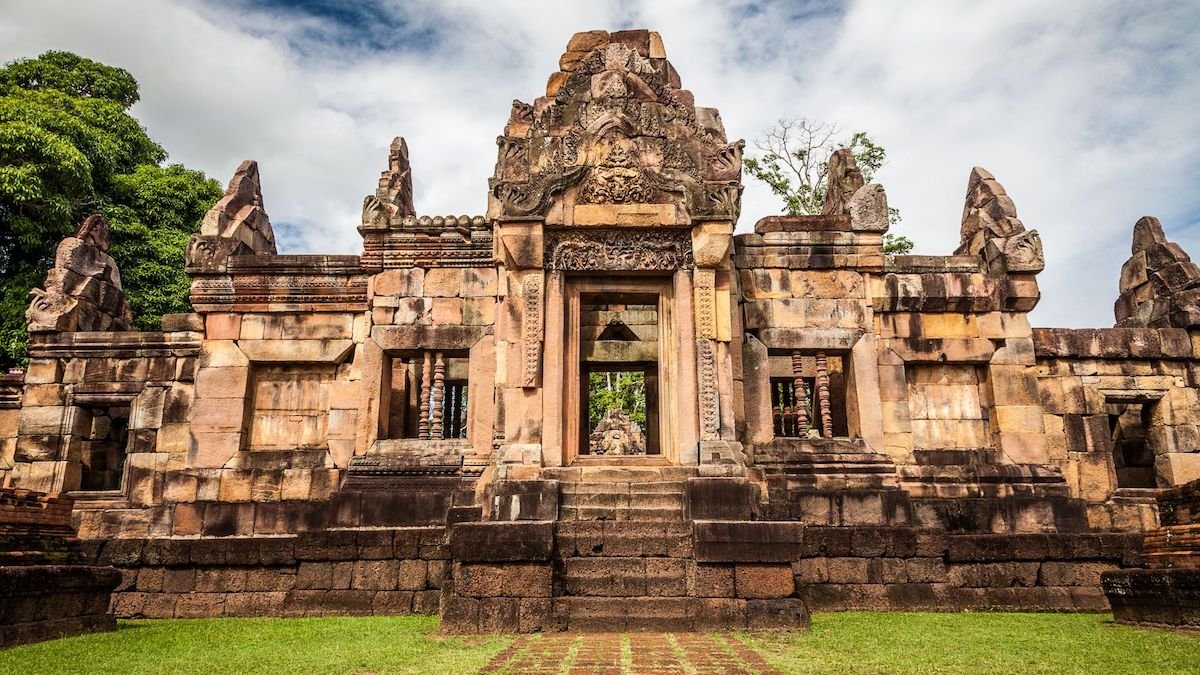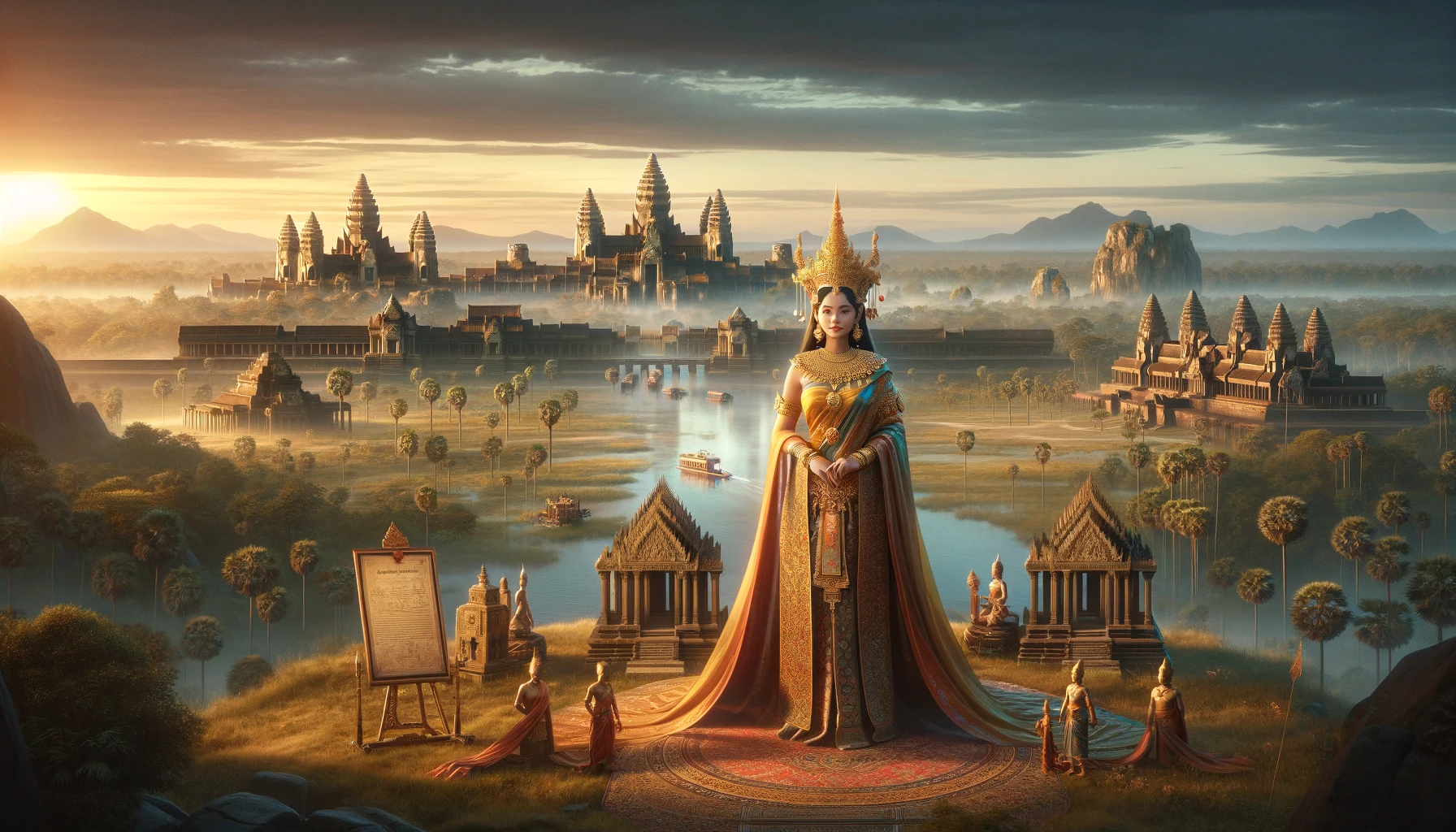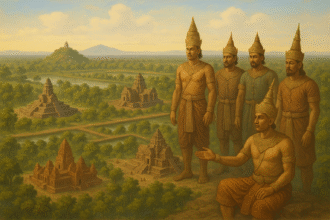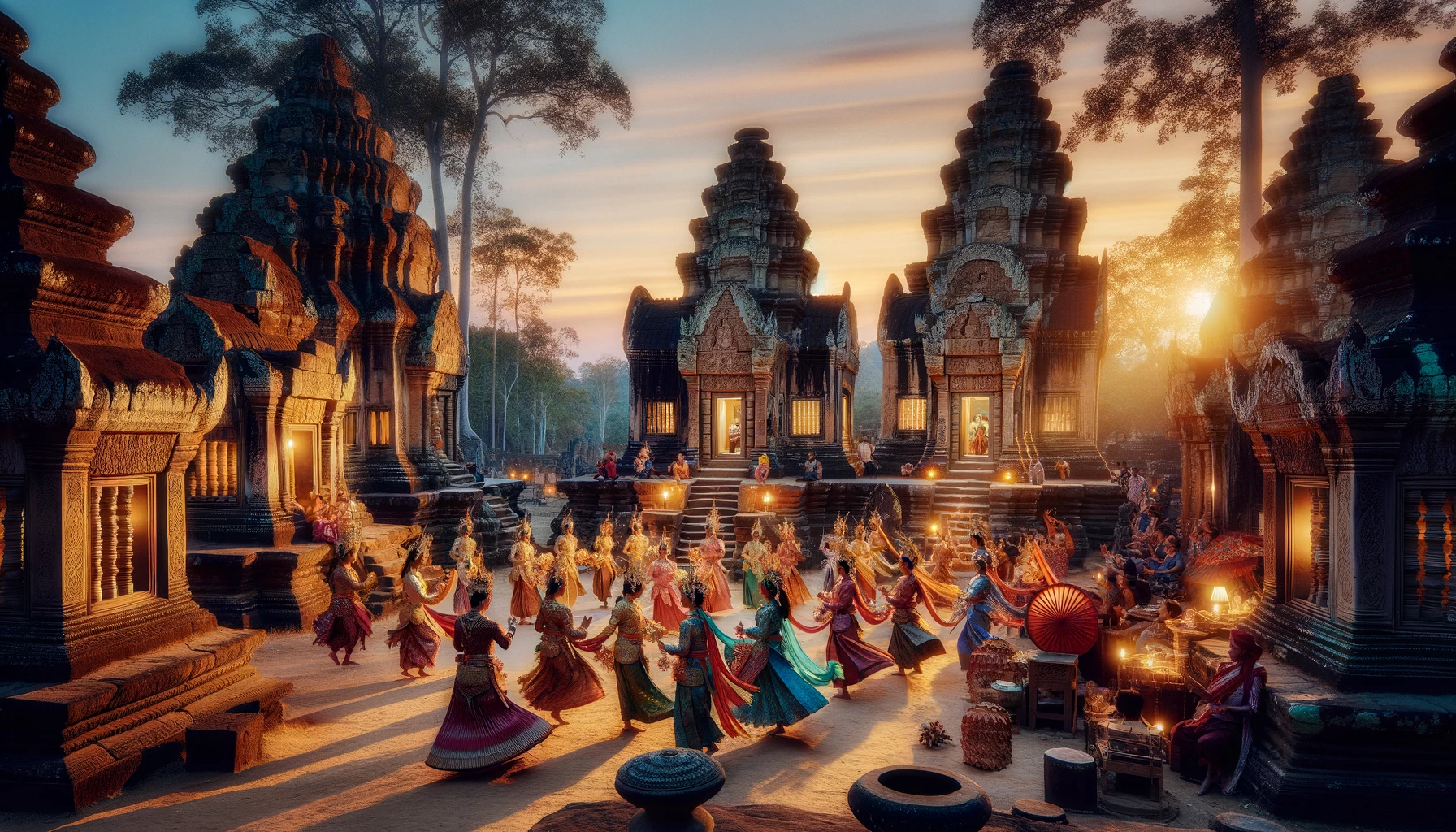The Khmer Empire, which flourished from the 9th to the 15th centuries, left an indelible mark on Southeast Asia with its remarkable architectural achievements. While Angkor Wat in Cambodia is the most renowned example, numerous Khmer temples are scattered across Thailand, showcasing the empire’s extensive reach and cultural influence. These temples, predominantly located in the northeastern regions of Thailand, offer a fascinating glimpse into the past.
Phimai Historical Park
Phimai Historical Park, situated in Nakhon Ratchasima Province, is one of the most significant Khmer temple complexes in Thailand. Built during the 11th and 12th centuries, Phimai’s architectural style closely resembles that of Angkor Wat, featuring intricate carvings and a central sanctuary that symbolizes Mount Meru, the mythical center of the universe in Hindu cosmology. Unlike many other Khmer temples that face east, Phimai is oriented southeast towards Angkor, reflecting its historical connection to the Khmer Empire’s capital (Backpackers Thailand) (Renown Travel).
Key Features:
- Main Sanctuary: Constructed from white sandstone, the central prang is adorned with detailed carvings depicting scenes from Hindu mythology and the life of Buddha.
- Naga Bridges: These bridges symbolize the transition from the earthly realm to the divine, leading visitors into the heart of the temple complex.
- Moats and Ponds: Surrounding the temple, these water features symbolize the oceans around Mount Meru.
Prasat Hin Phanom Rung
Located in Buriram Province, Prasat Hin Phanom Rung is built on the summit of an extinct volcano. The temple complex, constructed between the 10th and 13th centuries, is dedicated to Shiva and is renowned for its pink sandstone architecture. The main tower symbolizes Mount Kailash, the abode of Shiva, and is surrounded by several smaller towers and libraries.
Highlights:
- Processional Walkway: A 160-meter-long walkway leads to the temple, providing stunning views of the structure.
- Naga Bridges: Two naga bridges symbolize the passage from the human world to the divine.
- Inner Sanctuary: The central tower, with its intricate carvings of Hindu deities, is the focal point of the temple (Backpackers Thailand) (Live Less Ordinary) (Renown Travel).
Phanom Rung is also famous for an annual phenomenon when the sunrise aligns perfectly with the temple’s doorways, celebrated during the Phanom Rung Festival in April. This event includes traditional ceremonies, dance performances, and a spectacular sound and light show (Live Less Ordinary) (Renown Travel).
Prasat Muang Tam
Near Phanom Rung, Prasat Muang Tam is another significant Khmer temple. Built in the late 10th century, this temple complex features a series of stepped tanks and ponds symbolizing the oceans surrounding Mount Meru. The temple’s sandstone structures and intricately carved lintels provide a quieter, yet equally impressive, experience compared to the more visited Phanom Rung.
Visitors can purchase a combined ticket for both Phanom Rung and Muang Tam, making it convenient to explore both sites in one trip (Live Less Ordinary) (Renown Travel).
Prasat Sikhoraphum and Prasat Ban Pluang
In Surin Province, Prasat Sikhoraphum and Prasat Ban Pluang stand as fine examples of Khmer architecture:
- Prasat Sikhoraphum: Dating back to the 12th century, this temple features five brick prangs adorned with carvings of apsaras and scenes from Hindu mythology.
- Prasat Ban Pluang: Constructed in the 11th century, this site includes a square sandstone tower and surrounding moats, showcasing typical Khmer architectural styles (Backpackers Thailand) (Renown Travel).
Sdok Kok Thom
Situated in Sa Kaeo Province near the Cambodian border, Sdok Kok Thom is another significant Khmer temple. Built in the 11th century, this temple features a well-preserved central sanctuary and extensive inscriptions that provide valuable insights into the history and administration of the Khmer Empire (Renown Travel).
Visiting Khmer Temples in Thailand
Exploring these temples offers a unique opportunity to understand the Khmer Empire’s influence beyond Cambodia. Visitors can join guided tours or opt for self-drive programs to explore these historical sites at their own pace. The roads leading to these temples are generally well-maintained, making it easy for tourists to navigate.
These Khmer temples are architectural marvels and symbols of the cultural and historical ties that bind the region. Their preservation and restoration by the Thai Fine Arts Department ensure that future generations can continue to appreciate these remnants of a glorious past








